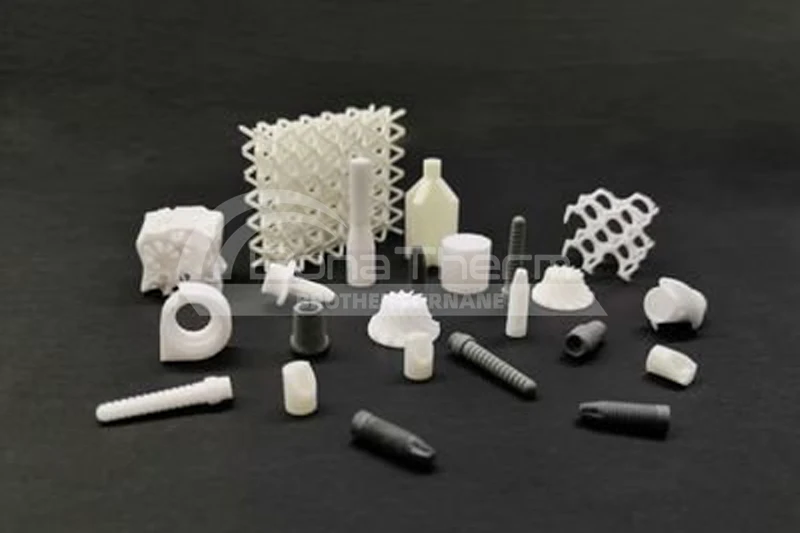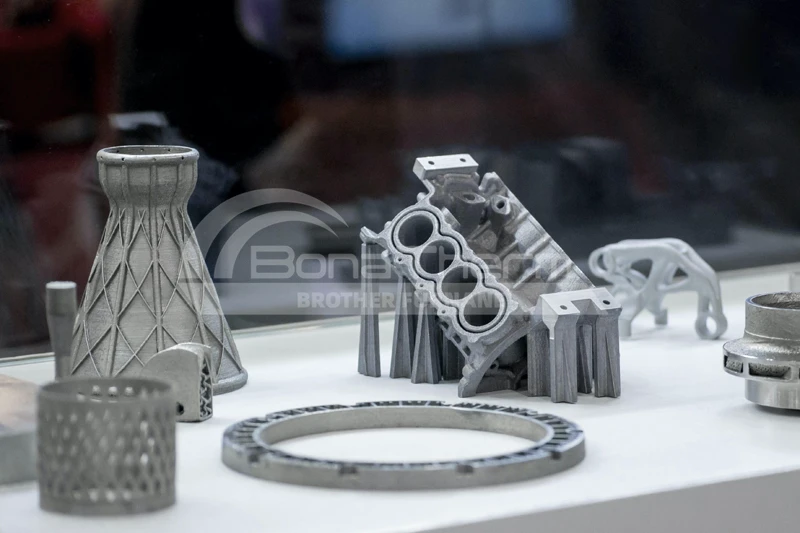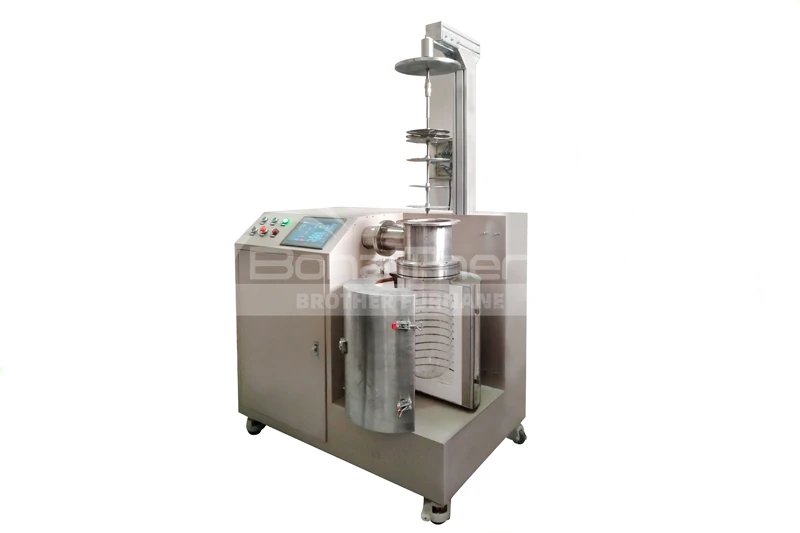Equipment for Ceramic Sintering: High-Temperature Vacuum Tungsten Furnaces
Ceramic sintering is an essential process in the manufacturing of ceramics,
where heat and pressure are applied to transform ceramic powders into durable
solid structures. The choice of equipment plays a crucial role in this process,
directly affecting the quality and properties of the final product.
In this article, Brother Furnace will delve into high-temperature vacuum tungsten furnaces, exploring their benefits and why they are increasingly favored in advanced ceramic sintering.
Understanding Ceramic Sintering
Ceramic sintering involves heating ceramic powders to a temperature below
their melting point, allowing the particles to bond and form a dense, solid
structure. This process is vital across various industries, including aerospace,
automotive, electronics, and medical fields.
Sintered ceramics are known for their exceptional mechanical strength, thermal stability, and chemical resistance, making them ideal for applications like cutting tools, insulators, and structural components.
The sintering process typically includes several stages: the initial heating, where the particles begin to bond; the densification phase, where voids are reduced, and the final cooling stage, which solidifies the structure. Each stage requires careful control of temperature and environment to ensure optimal results.
Advantages of High-Temperature Vacuum Tungsten Furnaces
Superior Temperature Control
One of the primary benefits of high-temperature vacuum furnaces is their exceptional temperature control. These furnaces from Brother Furnace are equipped with advanced thermoregulation systems that allow for precise monitoring and adjustment of temperatures throughout the sintering process. This level of control is essential for achieving uniform densification and optimal material properties.
In the context of advanced ceramic sintering, maintaining a consistent
temperature profile is critical. Temperature variations can lead to defects,
such as warping or cracking, which compromise the integrity of the final
product. High-temperature vacuum tungsten furnaces ensure that temperature
fluctuations are minimized, resulting in high-quality sintered ceramics.
Enhanced Material Properties
High-temperature vacuum tungsten furnaces are specifically designed to improve the properties of sintered ceramics. The vacuum environment reduces the likelihood of contamination from external sources, which can adversely affect the final product's strength and durability. Additionally, the ability to achieve higher temperatures enables the use of advanced ceramic materials, leading to enhanced mechanical and thermal properties.
Advanced ceramics produced in these furnaces often exhibit superior wear resistance, thermal shock resistance, and overall structural integrity. This makes them ideal for high-performance applications in demanding environments, such as aerospace and medical devices.
Energy Efficiency
Energy efficiency is another significant advantage of high-temperature vacuum tungsten furnaces. Although the initial investment may be higher compared to traditional kilns or common electric furnaces, the long-term energy savings can be substantial. These furnaces are designed to operate efficiently, reducing energy consumption during the sintering process.
Furthermore, the vacuum environment allows for faster heating and cooling cycles, which translates to reduced energy costs over time. By investing in a high-efficiency sintering furnace, you can achieve significant operational savings while producing high-quality ceramics.
Reduced Contamination
One of the most critical aspects of ceramic sintering is maintaining a clean environment to minimize contamination. High-temperature vacuum tungsten furnaces excel in this regard by creating a controlled vacuum atmosphere during the sintering process. This minimizes the presence of gases and impurities that can compromise the quality of the sintered ceramics.
By reducing contamination, you can ensure that the final products meet
stringent quality standards. This is especially important in industries such as
aerospace and electronics, where material integrity is paramount.
Key Features to Select a High-Temperature Vacuum Tungsten Furnace
When selecting a high-temperature vacuum tungsten furnace, several key features should be considered to ensure optimal performance and suitability for your specific needs.
Temperature Range
A wide temperature range is crucial for versatile applications. High-temperature vacuum furnaces is capable of reaching temperatures above 2000°C to accommodate various advanced ceramic materials. This flexibility allows manufacturers to work with a broader range of materials and formulations.
Vacuum Capabilities
The ability to maintain a high-quality vacuum is essential for enhancing the quality of sintering. Look for furnaces that offer robust vacuum capabilities to ensure minimal contamination and optimal material properties during the sintering process.
Furnace Size and Capacity
Choosing the right size and capacity is important to meet production demands.
Consider the scale of your operations and the volume of ceramics to be sintered.
A furnace that is too small may limit production capabilities, while an
oversized unit can lead to unnecessary energy consumption. Brother Furnace not
only provides a wide range of vacuum tungsten furnaces but also offers
customized services that can meet your special needs.
Control Systems
Advanced control systems enhance the precision and ease of use of high-temperature vacuum furnaces. Look for models with intuitive interfaces and programmable settings to streamline the sintering process. Brother Furnace's vacuum tungsten furnaces have an advanced PLC automatic control system, which can significantly improve operational efficiency and reduce the possibility of human error.
Build Quality and Materials
The build quality of the furnace is vital for durability and long-term performance. High-quality materials should be used in the construction of the furnace to withstand the extreme conditions of high-temperature sintering. Investing in a well-built furnace ensures reliability and reduces maintenance costs over time.
Case Studies and Success Stories
Several manufacturers have successfully implemented high-temperature vacuum tungsten furnaces in their operations, achieving remarkable results. For
instance, a leading aerospace company utilized a high-temp vacuum furnace for
ceramics to enhance the performance of their components, resulting in a 30%
increase in production efficiency.
Another case study involves a medical device manufacturer that adopted high-temperature vacuum furnaces to produce advanced ceramics for implants. The improved material properties led to enhanced patient outcomes and reduced production waste.
Conclusion
High-temperature vacuum tungsten furnaces represent a cutting-edge solution for ceramic sintering, offering numerous advantages over traditional methods. With superior temperature control, enhanced material properties, energy efficiency, and reduced contamination, these furnaces are ideal for advanced ceramic manufacturing.
Explore our range of high-efficiency sintering furnaces today to meet your advanced ceramic sintering needs. By investing in quality sintering ceramics equipment from Brother Furnace, you can elevate your production capabilities and ensure the highest standards in product quality.











